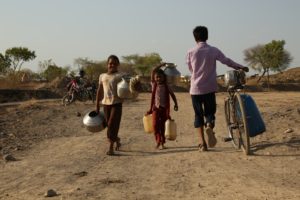Report reveals ‘unprecedented’ water scarcity
90% of children in the Middle East and North Africa (MENA) live in areas of extremely high water stress, according to a new report published by UNICEF.
The MENA region is reported to be the most water-scarce region in the world.
According to the report, key drivers behind this are rising agricultural demand and the expansion of irrigant land using aquifers.
While globally, agriculture accounts for an average of 70% of water use, it is more than 80% in the MENA region.
Additional factors contributing to water scarcity include conflict especially in Syria, Yemen and Sudan, migration of people from rural to urban areas, population growth, poor water management, deteriorating water infrastructure, and issues with governance.
Conflicts and regional economic and political instability have also increased the demand for emergency water sources including trucking, further exacerbating groundwater depletion.
While not the sole reason for water scarcity, climate change results in less rain for agriculture and the deterioration of the quality of freshwater reserves due to the movement of saline water into freshwater aquifers and increased pollution concentrations.

UNICEF has said they will continue to support local partners, governments, civil society, and the private sector to address the vulnerability of water resources in the Middle East and North Africa, including to:
- Preserve the individual’s human right to access water and sanitation services, without it being compromised by other water uses or threatened by targeting of water infrastructure in conflict settings.
- Create a robust enabling environment with strong national policy and regulatory systems that address scarcity, including over-extraction of groundwater, water accounting and data analysis.
- Work with civil society, especially youth as agents of change, on the value of water and water conservation.
- Initiate climate change response plans, incorporate water scarcity as a priority component and allocate a sufficient national budget to address water scarcity.
- Create coordination groups between key ministries (e.g. water, agriculture, energy and finance) and sectoral actors to support policy revisions and increase technical capacity.
- Support capacity building of key water sector actors, including regulatory bodies, private sector operators, and national water utilities to upgrade ageing infrastructure, develop sustainable operation, and reduce water wastage.
Bertrand Bainvel, UNICEF deputy regional director for the Middle East and North Africa said: ‘Water Scarcity is having a profound impact on children and families, starting with their health and nutrition. Water scarcity is also increasingly becoming a driver for conflicts and displacement.
‘Within this context, it is even more unacceptable that those fighting in conflicts target water infrastructure. Attacks on water infrastructure must stop.’
Photo by Gyan Shahane












